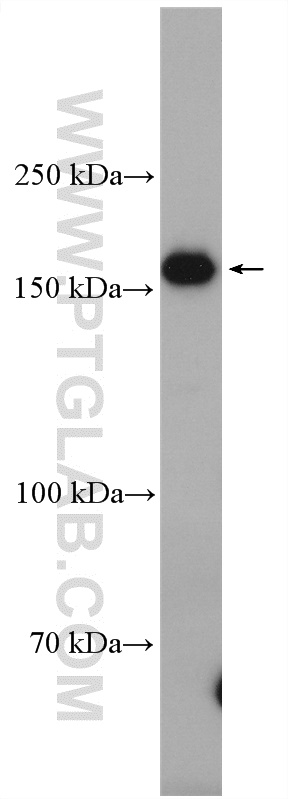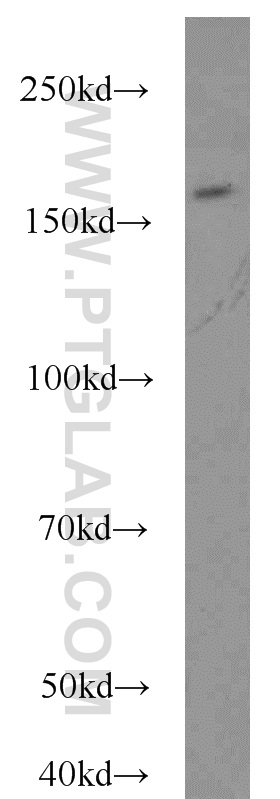验证数据展示
经过测试的应用
| Positive WB detected in | HeLa cells, HEK-293 cells |
推荐稀释比
| 应用 | 推荐稀释比 |
|---|---|
| Western Blot (WB) | WB : 1:200-1:1000 |
| It is recommended that this reagent should be titrated in each testing system to obtain optimal results. | |
| Sample-dependent, Check data in validation data gallery. | |
产品信息
19542-1-AP targets FANCA-Specific in WB, ELISA applications and shows reactivity with human samples.
| 经测试应用 | WB, ELISA Application Description |
| 经测试反应性 | human |
| 免疫原 | Peptide 种属同源性预测 |
| 宿主/亚型 | Rabbit / IgG |
| 抗体类别 | Polyclonal |
| 产品类型 | Antibody |
| 全称 | Fanconi anemia, complementation group A |
| 别名 | FA, FA H, FA1, FAA, FACA, FAH, FANCA, FANCA-Specific, FANCH, Fanconi anemia group A protein, Protein FACA |
| 计算分子量 | 163 kDa |
| 观测分子量 | 163 kDa |
| GenBank蛋白编号 | NM_000135 |
| 基因名称 | FANCA |
| Gene ID (NCBI) | 2175 |
| RRID | AB_10638755 |
| 偶联类型 | Unconjugated |
| 形式 | Liquid |
| 纯化方式 | Antigen affinity purification |
| UNIPROT ID | O15360 |
| 储存缓冲液 | PBS with 0.02% sodium azide and 50% glycerol , pH 7.3 |
| 储存条件 | Store at -20°C. Stable for one year after shipment. Aliquoting is unnecessary for -20oC storage. |
背景介绍
FANCA, also named as FAA, FACA and FANCH, is DNA repair protein that may operate in a postreplication repair or a cell cycle checkpoint function. FANCA may be involved in interstrand DNA cross-link repair and in the maintenance of normal chromosome stability. Defects in FANCA are a cause of Fanconi anemia (FA) which is a genetically heterogeneous, autosomal recessive disorder characterized by progressive pancytopenia, a diverse assortment of congenital malformations, and a predisposition to the development of malignancies. The antibody is specific to isoform1 of FANCA.
实验方案
| Product Specific Protocols | |
|---|---|
| WB protocol for FANCA-Specific antibody 19542-1-AP | Download protocol |
| Standard Protocols | |
|---|---|
| Click here to view our Standard Protocols |


